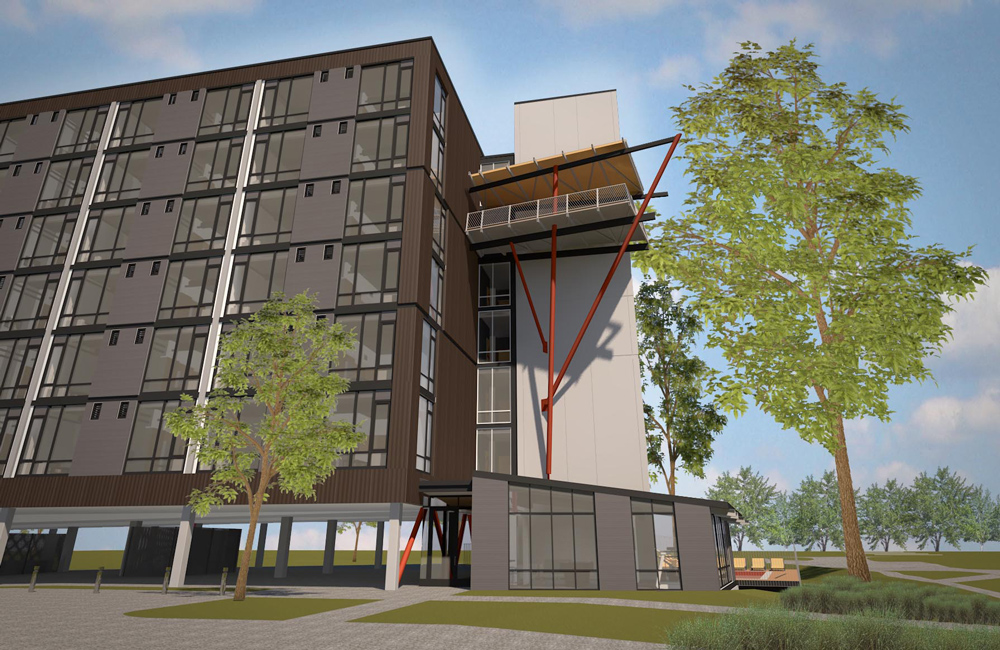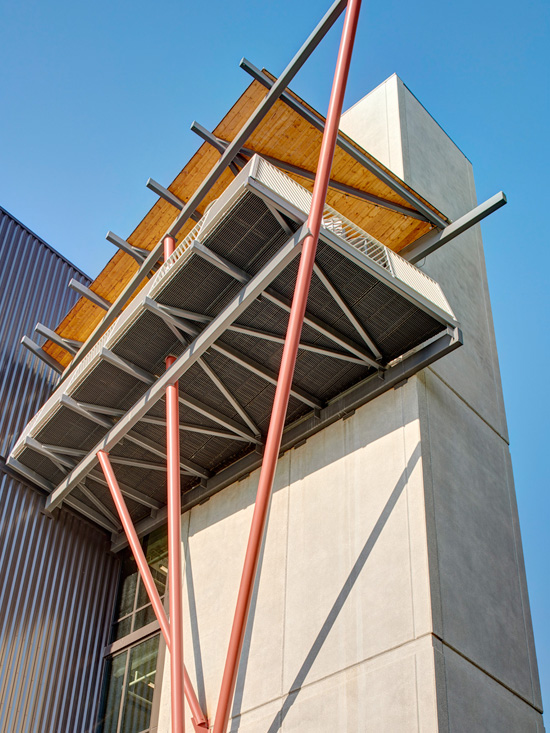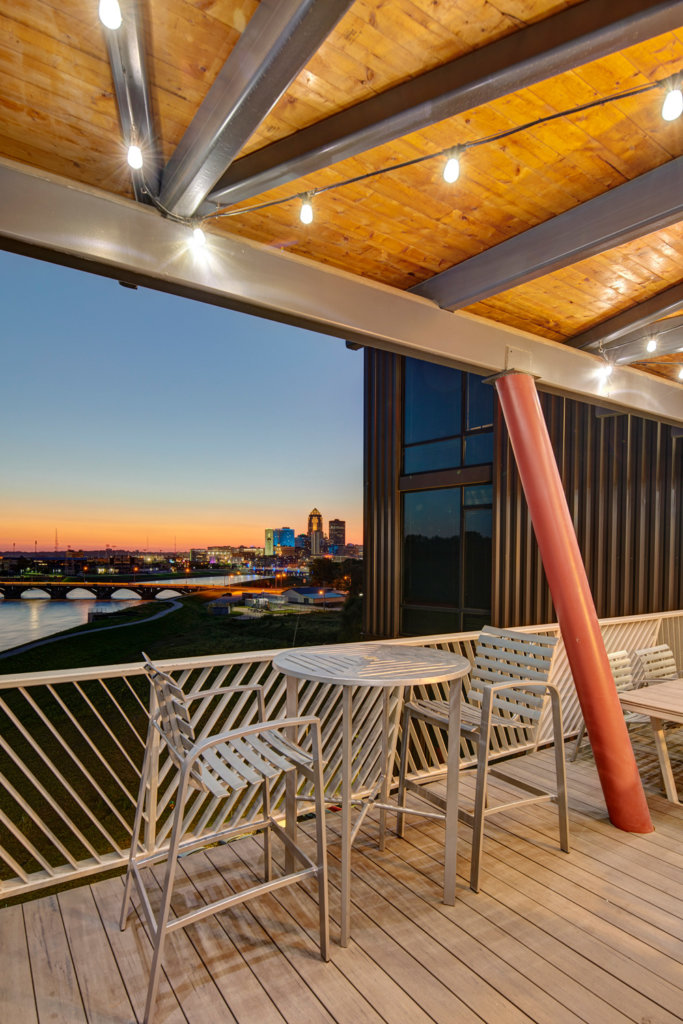Josh Williams, Director of BIM at Des Moines, IA based – Slingshot Architecture has been using Archicad since version 16 – transitioning away from Revit to adopt Archicad back then. The Mac-based office had been looking to move away from a Windows operating system to design a variety of projects, which includes urban context mixed use multifamily buildings, a rapidly growing segment of work for architectural firms in the Midwest.
Slingshot begins all projects in Archicad starting with conceptual design all the way through construction documents (CDs) without shifting away from the software. No other third-party design software is needed. Slingshot makes use of Graphisoft’s award-winning presentation app, BIMx in client meetings as well as on the job site with contractors, which Williams says has worked well for them.
We use our model to help clarify intent and answer quick questions. Whenever there’s confusion with the drawing, the model helps provides clarity.
Josh Williams, Slingshot Architecture
Making the switch to Archicad
Having had experience with Revit prior to Archicad, Williams is able to make a fair comparison about why Archicad works better for Slingshot. The advantages include Archicad’s being on a platform the team prefers, as well as having a single software that empowers design through CDs.
“One of our principals had used Archicad at a previous firm – so that was the initial introduction to it. The quick sell was based on the 3D interface and the modeling capabilities in 3D. We always felt Revit was just a little bit more rigid. When we switched to Archicad we had to adjust to a different way of doing things with layer management, keynoting and similar language. That represented our biggest hurdle, but we managed to merge our strengths in Revit and bring it into Archicad. In this way, using what worked best, we developed a robust template – making it simpler for us just to move from design to construction. That’s been really beneficial for us.”
The change from version to version that we appreciate most is streamlining the internal workflow and increasing background speed. Archicad continues to get faster, which we all know saves time, and money.
Josh Williams, Slingshot Architecture
The firm’s evolutionary relationship with Archicad is built on embracing new features with every new version. Slingshot assigns a team to address how the new features impact their workflow.
“Our internal team works on updating our template and in doing so, elevates our process to the level of the new tools being offered. The change from version to version that we appreciate most is streamlining the internal workflow and increasing background speed. Archicad continues to get faster, which we all know saves time, and money.”
Features that foster collaboration
Specific features such as the railing tool, beam and column tools have helped Slingshot when working with consultants who still use Revit. Standard out of the box beam sizes and standard steel member sizes that the firm can use to model add benefit and may even help Slingshot make the case for their partners to look at incorporating Archicad into their own workflow.
“We don’t get complaints about our coordination process, but the anecdotes we’ve been reading about how structural and architectural and even now MEP can work in the same model are very intriguing. As a process-driven firm we like to think we do not do the same project types over and over again. We rebranded our firm ‘Slingshot’ to discuss our process of our ‘Pullback Phase’ and gaining momentum before making impact. Our process involves digging into every project as its own specific set of drivers. We spend a lot of time on the planning, investigating, and programming side of things before we even put pen to paper on any design solutions. We boil this Pullback Phase down to facts, constraints, needs, and goals – four essential categories we define early to be efficient throughout our entire design process.”
Eagle View Lofts
Slingshot’s most robust use of Archicad in recent days was a seven-story project called the Eagle View Lofts. Located in a flood plain and funded by grant money – the project came with some unique design challenges. Archicad modules and complex profiles populated the model, which Williams considers to be a “very smart” model – which came in very handy when, as many projects have, a major curve ball was thrown at them.
“On Eagle View, 75 to 80% of the model elements in the project were a hotlink module. Whether it was an exterior curtain wall type or a residential unit, or a perimeter structural beam detail. We spent a lot of time up front modeling these things right, and then about halfway through CDs, we had this big curve ball where the owner wanted to take six inches out of each floor to floor height. On any other software, that would have taken so much time to get those changes incorporated and then get back up to a CD level. But we executed those changes in half a day because we just had to edit a few elements and everything just repopulated. So it was a really fun model to work on. There are unique details and interesting ways that we modeled. We weren’t just modeling with walls. We were really thinking about how a kit of parts can work in pulling a model together.”
Slingshot applied their “pullback process” with vigor on the Eagle View Lofts project. Using Cinema 4D at the time, the imagery includes diagrams that show the urban scale of our project, what views make sense, where connections to major bike paths and pedestrian paths would be as well as important neighborhood elements – all significant factors to consider when designing a residential tower with affordable housing requirements.
“In this model, rather than providing individual balconies, we provided one large communal balcony on the project. It is located across the river from the eagle nesting grounds in Des Moines. The communal balcony echoed nest-like architecture while emphasizing user gatherings and views of the Des Moines skyline.”

The horizontal, black reveals at floor levels were set up in the Archicad model as a complex profile. It was detailed so that section and detail cuts through the wall would already be detailed to show floor edge steel, fireproofing and insulation. Using modules offered time savings as well when it came to setting up the windows.
“Every window is modeled as a curtain wall in a separate module file. There are four different types of windows on the project, and we shift where the mullions and mechanical louvers are at, but these window types were highly repetitive modules. If we needed to, modify a mullion location, you just change it once, and the rest of the model is populated to make that change. We didn’t have to go in and edit individual curtain wall to make a slight aesthetic change or coordinate with our mechanical engineer.”
Getting creative with Archicad
Slingshot exploited Archicad to be creative in how they set up their model. That resulted in being able to respond to changes the owner gave them quickly. Had they not executed the model that way, it would have been tedious and time-consuming to take six inches out of every window, out of every floor, out of every wall and fill piece.
Eagle View Lofts features sustainable solutions as well that Williams says his team found fun to work on. “All rainwater was designed to be collected on the building into a cistern, to potentially be used by a community garden that’s adjacent to the building. All exterior wall assemblies and glazing systems are well above code minimum and well above what our market expects for energy efficiency in multi-family residential buildings. There’s a lot of unique mechanical systems that we also had to coordinate within the units to meet the energy efficiency goals of the grant program.”
That enjoyment could be found on one of the firm’s first big projects in Archicad is a testament to how one can enjoy starting with a new program even as one learns new ways to maneuver and capitalize on its strengths.
“That transition from Revit to Archicad allowed us to build experience and get adept at making a smarter model. We use this model as an example on a lot of our work now. What are ways that we can be efficient with how we model, because anyone can model a building and make it look pleasing, but how do you make it robust enough to be adaptable over the timeline of a project? How easy is the model to respond to changes? How specific is it? Are there time saving measures that might take a little bit more time upfront, but really set the project up for success later when we don’t have time to be redoing design? We need to be focusing on documentation, so we have model strategy meetings at each phase, schematic design, design development, construction documents to make sure we are being efficient with our time.”
The staff at Slingshot has committed to using Archicad fully. The firm trains team members to be able to be in Archicad with the goal of having each person being a model owner on a project, throughout the entire schedule of the project.
You might also like:

More Articles:
Archicad
Customer Stories
Education
Industry News
Tips, Resources + Downloads
Webinar Recordings

